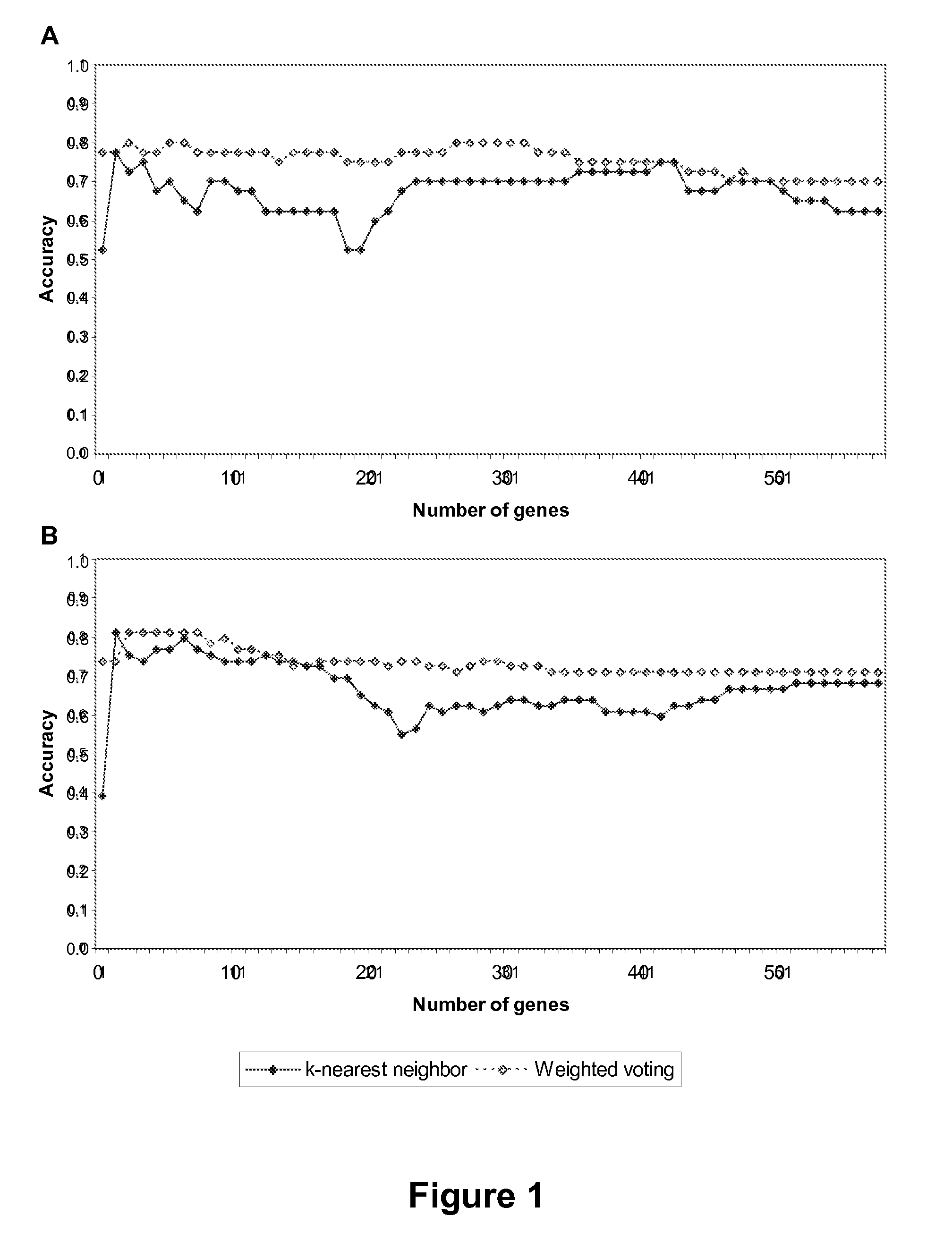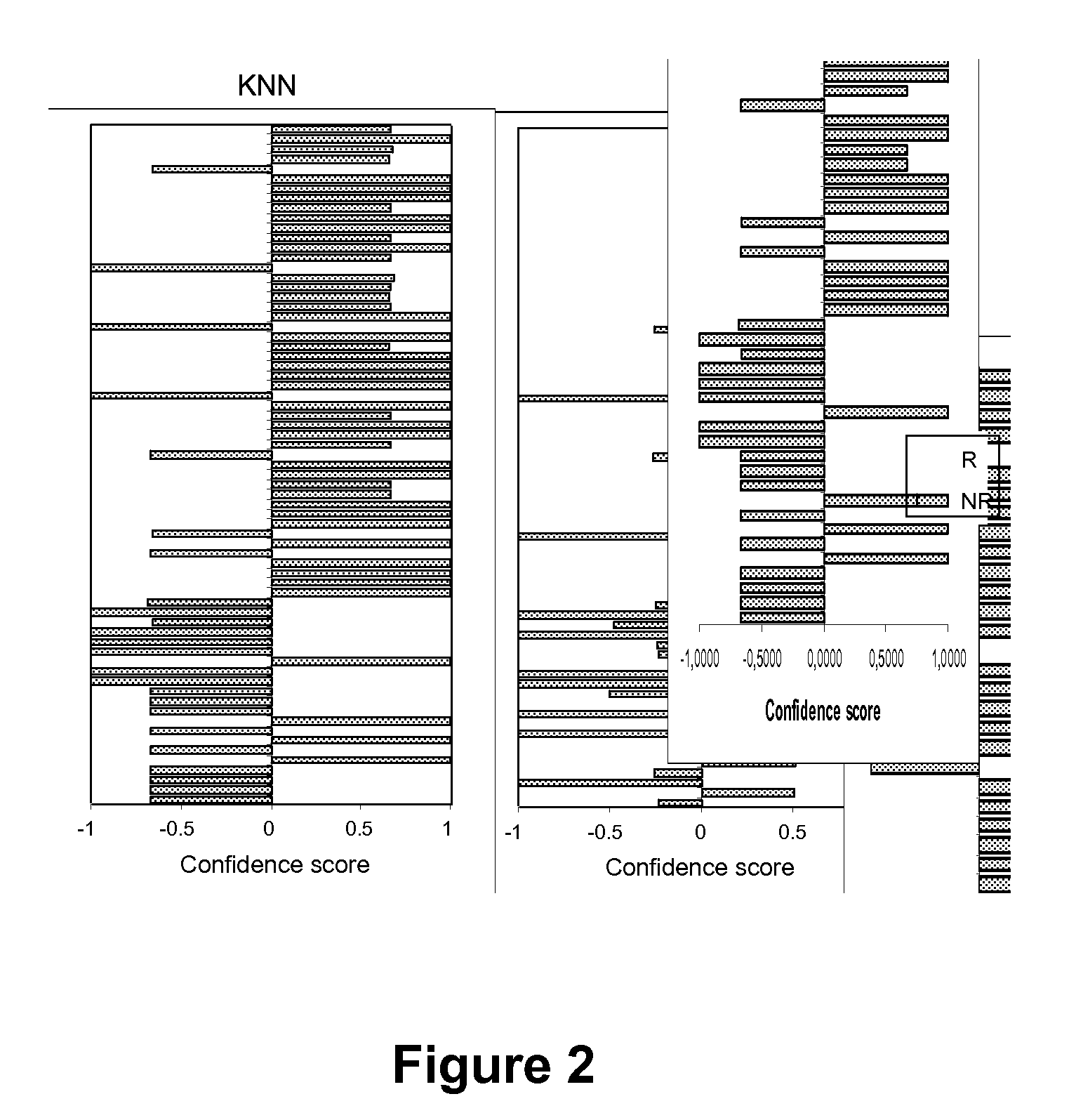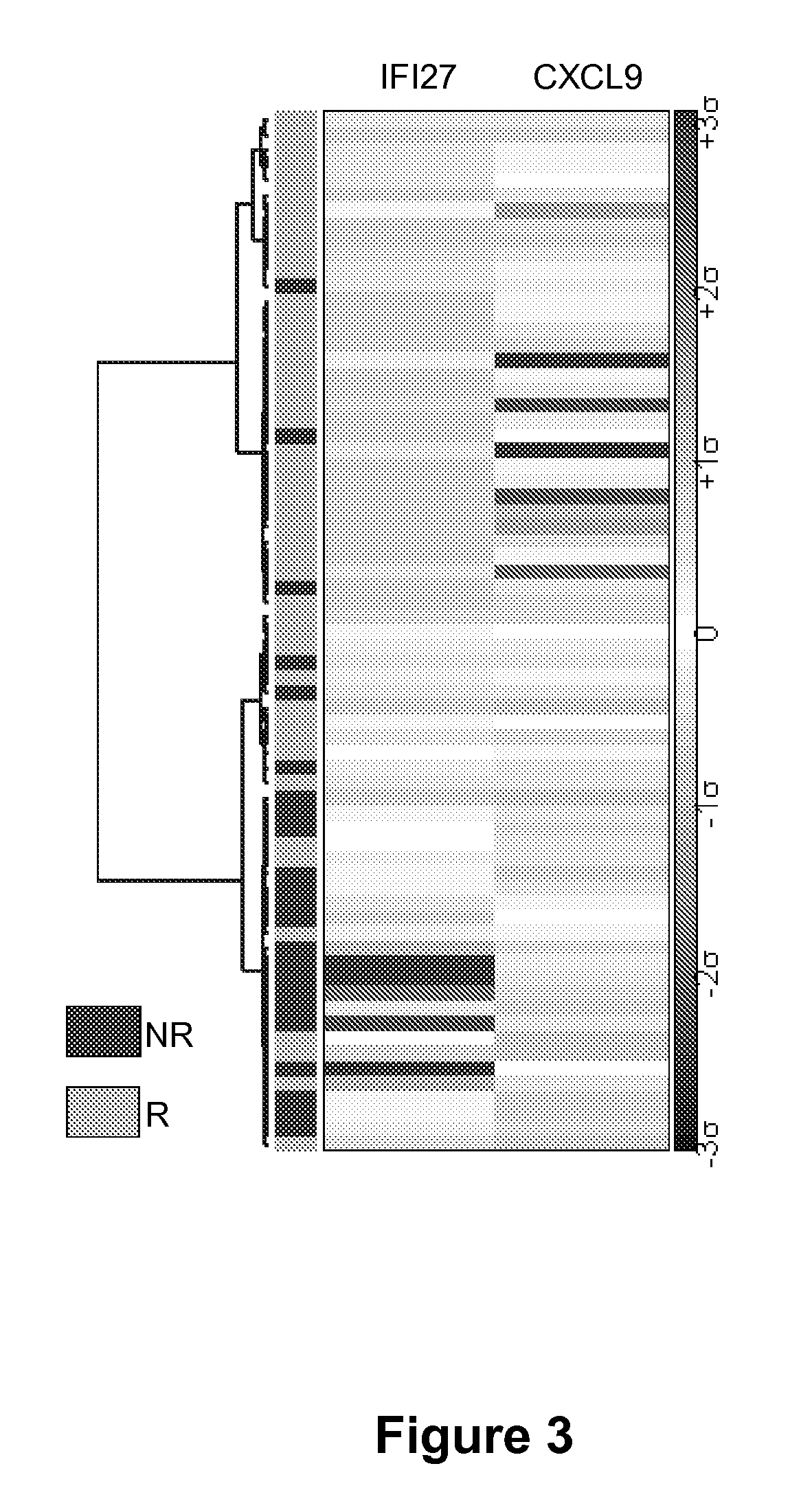Methods and kits for determining drug sensitivity in patients infected with hcv
a technology which is applied in the field of methods and kits for determining drug sensitivity in patients infected with hcv, can solve the problems of inability to apply dna microarray technology in routine use, the treatment of patients with chronic hcv infection remains a challenge both in clinical and cost-effectiveness, and the effect of reducing the number of patients
- Summary
- Abstract
- Description
- Claims
- Application Information
AI Technical Summary
Problems solved by technology
Method used
Image
Examples
example
A. Material and Methods
[0099]A.1. Patients:
[0100]Chronic Hepatitis C patients: Percutaneous liver biopsy specimens were selected from a cohort of untreated adult patients with CHC followed at Beaujon Hospital (Clichy, France). In each case, both immediately frozen liver tissue (stored at −80° C.) and fixed-paraffin-embedded tissue (for histology) were available. Patients were included in this study if they met the following criteria:
[0101]a—An established diagnosis of CHC with detectable anti-HCV antibodies, detectable serum HCV RNA with RT-PCR(HCV Amplicor 2.0; Roche diagnostics, Mannheim, Germany) and findings consistent with chronic hepatitis C on liver biopsy.
[0102]b—Absence of other causes of chronic liver disease (undetectable HBs-Ag, no excessive alcohol consumption defined as intake >30 g / day, hemochromatosis, autoimmune hepatitis, Wilson's disease, alpha-1 antitrypsin deficiency, primary sclerosing cholangitis or primary biliary cirrhosis).
[0103]c—Standard treatment regimen...
PUM
| Property | Measurement | Unit |
|---|---|---|
| Level | aaaaa | aaaaa |
Abstract
Description
Claims
Application Information
 Login to View More
Login to View More - R&D
- Intellectual Property
- Life Sciences
- Materials
- Tech Scout
- Unparalleled Data Quality
- Higher Quality Content
- 60% Fewer Hallucinations
Browse by: Latest US Patents, China's latest patents, Technical Efficacy Thesaurus, Application Domain, Technology Topic, Popular Technical Reports.
© 2025 PatSnap. All rights reserved.Legal|Privacy policy|Modern Slavery Act Transparency Statement|Sitemap|About US| Contact US: help@patsnap.com



